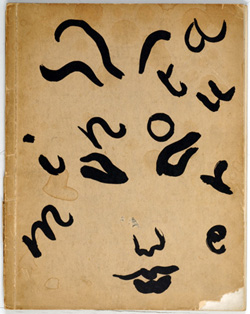 |
||||||
5. Directing the Line of Type
|
By the 1930s, art direction was becoming as important to magazines as the actual images they contained. Modern art had been exploring spatial relationships which, in turn, affected magazine layout and design. Alexander Liberman, the legendary editorial director of Condé Nast from 1962 to1994, explained that “It happened with Cubism, the general modernity after the first world war, and the Bauhaus. At a certain moment there were very interesting graphic possibilities. It was a graphic revolution.” The succession of art movements such as Fauvism, Dadaism, Futurism, and the Bauhaus fostered collaboration between artists and writers, illustrators and periodicals, art and industry. In the 1930s art publications experimented with typography and layout. Two notable examples are E. Teriade’s Surrealist magazine Minotaure and Verve, in which Teriade juxtaposed historical images, contemporary art and literary essays that resulted in an unusually eclectic periodical. The art director distilled ideas from the artistic and intellectual vanguard and incorporated them into the graphic arts. Special Collections has a strong assortment of periodicals demonstrating the graphic inspiration of prominent art directors and publishers such as Alexy Brodovich of Harper’s Bazaar and Portfolio, Dr. Mehemed Fehmy Agha of Vogue and Vanity Fair, and Fleur Cowles of Flair, a creative genius with innovative production ideas. With themed issues, a peephole in each cover, and assorted inserts, Flair was not just any style publication: it set the standard for style publications. These magazine professionals not only changed the face of fashion journalism with creative typeface and layout, they were also supporters of the many illustrators who had emerged as celebrated artists since the beginning of the 20th century. Marcel Vertès and Cassandre illustrated covers for Harper’s Bazaar; and George Lepape, Pierre Brissaud, Harriet Meserole, Rene Bouché, and Eric designed for Vogue. However, by the 1930s photography was beginning to supercede illustration. Photography was not only less expensive, it was the medium of the moment, presenting stylized images of Hollywood movie stars along with dramatic fashion spreads by such talents as Horst, Hoyningen-Huene, and Irving Penn. By the late 1950s, fashion illustration as a major design element had waned and would not revive until the 1980s.
|
|||||
